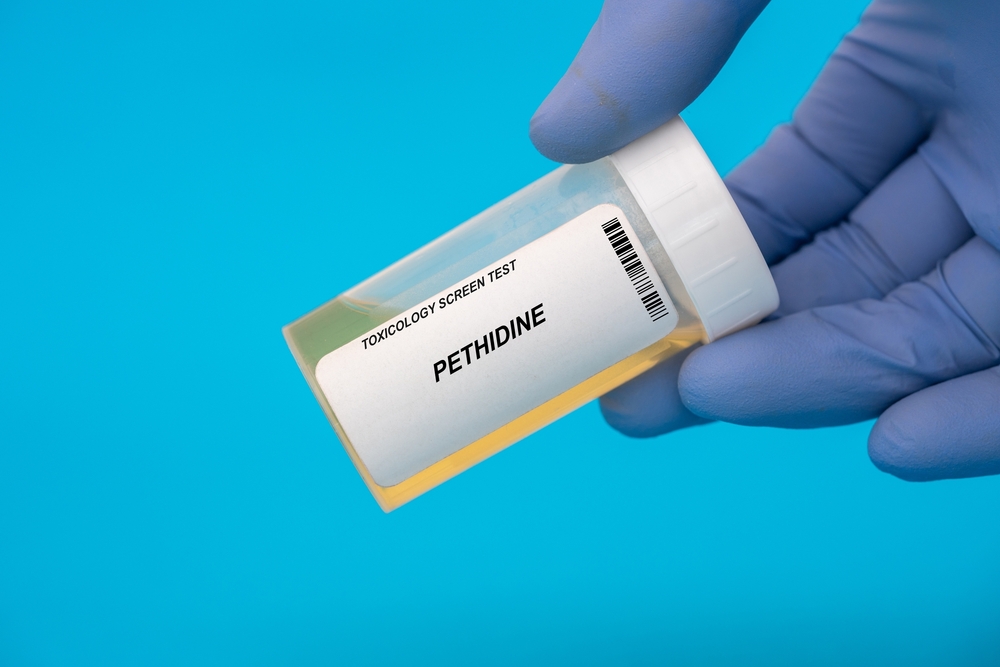Last Updated:
July 21st, 2025
Demerol Addiction | Symptoms, Effects and Causes
While Demerol might not be as famous as other opioids, it can still be highly addictive and life-destroying. Demerol addiction can affect anyone, but it has been labelled “the doctors’ and nurses’ addiction” because of Demerol’s notable abuse rates among healthcare professionals. Both doctors who prescribe Demerol and patients who use it need to be very cautious, as abusing Demerol can be extremely dangerous and even deadly. To prevent the dangers, understanding Demerol addiction signs and symptoms and how to get help are crucial for both users and prescribers.

What is Demerol?
Pethidine, also known by its brand name Demerol, is a type of pain relief medication used mainly for managing moderate to severe pain when other treatments don’t work. It is particularly useful for sudden, intense pain such as labour pains, post-operative discomfort or pain from serious injuries. Demerol can be taken orally, injected directly into a vein, or given as a muscle injection, working in ways similar to morphine to help ease pain effectively.
The pain relief from Demerol kicks in fast, especially with intravenous use, making it a go-to for rapid relief of acute pain. However, its effects wear off sooner than many other opioids like morphine, so you usually need to take Demerol more frequently to maintain effective pain management.
In the UK, Demerol is categorised as a Class A drug, reflecting its high potential for abuse and the strict controls over its distribution. This classification means that Demerol can only be legally obtained with a doctor’s prescription and is intended solely for medical use. Any non-prescribed use or unregistered supply can result in serious legal implications, including a lengthy spell in prison.
How does Demerol work?
Demerol works by targeting the central nervous system which includes your brain and spinal cord. It attaches to opioid receptors on your nerve cells which are key parts of your body’s system for controlling pain. When Demerol binds to these receptors, it blocks the signals that tell your brain you are in pain, effectively reducing how much pain you feel.
Demerol also impacts the limbic system, the part of your brain that handles emotions. This lessens the distress you feel from pain and often causes feelings of intense joy or well-being. It also triggers the release of endorphins (your body’s natural feel-good chemicals), which help relieve pain and boost your mood even further.
What is Demerol addiction?
When a person starts using Demerol more than prescribed or for reasons other than pain relief, they risk developing an addiction. Demerol addiction is so powerful that once it has taken hold, the person continues to use Demerol even though they can see it has become a negative force in their life.
Both prescribed patients and recreational users are vulnerable to Demerol addiction. Those with prescriptions might unknowingly slip into dependency as they seek continued relief from pain while recreational users chase the high Pethinide provides. In both cases, the common consequence is tolerance – the need to increase your pethidine dosage to maintain its effects.
When Demerol is then present in the body continuously and in large amounts, it leads to physical dependence. This means your body has adapted to pethidine and considers its presence normal, necessary even, for everyday functioning. Stopping abruptly can trigger withdrawal symptoms that occur as the body tries to recalibrate itself without pethidine.
When Demerol is then present in the body continuously and in large amounts, it leads to physical dependence. This means your body has adapted to pethidine and considers its presence normal, even necessary, for everyday functioning. Stopping abruptly can trigger withdrawal symptoms that occur as the body tries to recalibrate itself without pethidine.
Warning signs of pethidine addiction
Recognising the signs of Demerol addiction is crucial for getting the necessary help before there are life-altering consequences. While Demerol addiction symptoms can differ from person to person, here are common signs to look out for:
- Nodding off suddenly or seeming unusually distant.
- Going to different doctors or faking prescriptions to get more Demerol.
- Having constant cravings for Demerol when it’s unavailable.
- Lying about the amount of Demerol being taken.
- Resorting to stealing or borrowing money to buy more Demerol.
- Stashing Demerol to make sure it doesn’t run out.
- Giving up hobbies, friendships and other things that used to be important.
- Ignoring work, home and family responsibilities.

If you recognise the pethidine addiction signs and symptoms but still can’t stop using it, you should seek help before bigger problems arise.
What causes pethidine addiction?
Pethidine addiction usually results from several interrelated factors that can vary greatly from person to person. Gaining an understanding of these influences is crucial for both preventing and addressing pethidine addiction.
Some primary factors include genetic predisposition, environmental influences such as exposure to drug use, personal mental health conditions and the manner in which the drug is prescribed and managed by healthcare providers.
These factors exist in different combinations in different people, which, along with pethidine’s inherent effects on the brain’s reward systems, make addiction a complex condition to treat. Because of this, if pethidine addiction can be prevented altogether, that is always the best course of action. To ensure prevention, these factors should be discussed between doctors and their patients before a pethidine prescription is administered.
The mental and physical dangers of Demerol addiction
The dangers of abusing Demerol are significant and include several risks that are both common to opioid abuse and specific to Demerol:
How to overcome pethidine addiction
Professional help for pethidine addiction starts with opioid detox. This means doctors help you use less and less pethidine safely when you are no longer physically dependent on it. They might also use another type of medicine like methadone to replace pethidine and to reduce how tough withdrawal feels.
Opioid rehab then follows detox as part of comprehensive treatment for Demerol addiction. This stage gets to the heart of your addiction, including the emotional and psychological triggers. You can find structured rehab programmes at both NHS and private facilities in the UK, but being in private, full-time residential care can be particularly effective. It offers a calm, focused environment that helps you stay clear of temptations and deeply engage with the recovery process.
Where to get help for Demerol addiction
If Demerol addiction is impacting your life, know that there is effective help available across the UK. The road to recovery from Demerol addiction may be tough, but with the right assistance, you have the strength to do it. Contact us to begin discussing your treatment options and start your journey to recovery.
Our compassionate team are ready and available to take your call, and guide you towards lasting the lasting addiction recovery you deserve.
Frequently Asked Questions
(Click here to see works cited)
- Fletcher, Nakaya. “Meperidine – StatPearls.” NCBI, https://www.ncbi.nlm.nih.gov/books/NBK470362/. Accessed 26 January 2025.
- UK Addiction Treatment Centres. “Opiate Addiction: Opioid Abuse Signs & Symptoms | UKAT.” UK Addiction Treatment Centres, 8 January 2024, https://www.ukat.co.uk/addiction/drug/prescription/opiate/. Accessed 26 January 2025.
- UK Rehab. “Demerol Addiction | Causes, Symptoms and Diagnosis.” UK Rehab, https://www.uk-rehab.com/prescription-drug-addiction/opioid/demerol/. Accessed 26 January 2025.
- Isbell H, White WM. Clinical characteristics of addictions. Am J Med. 1953 May;14(5):558-65. doi: 10.1016/0002-9343(53)90371-4. PMID: 13040362.

